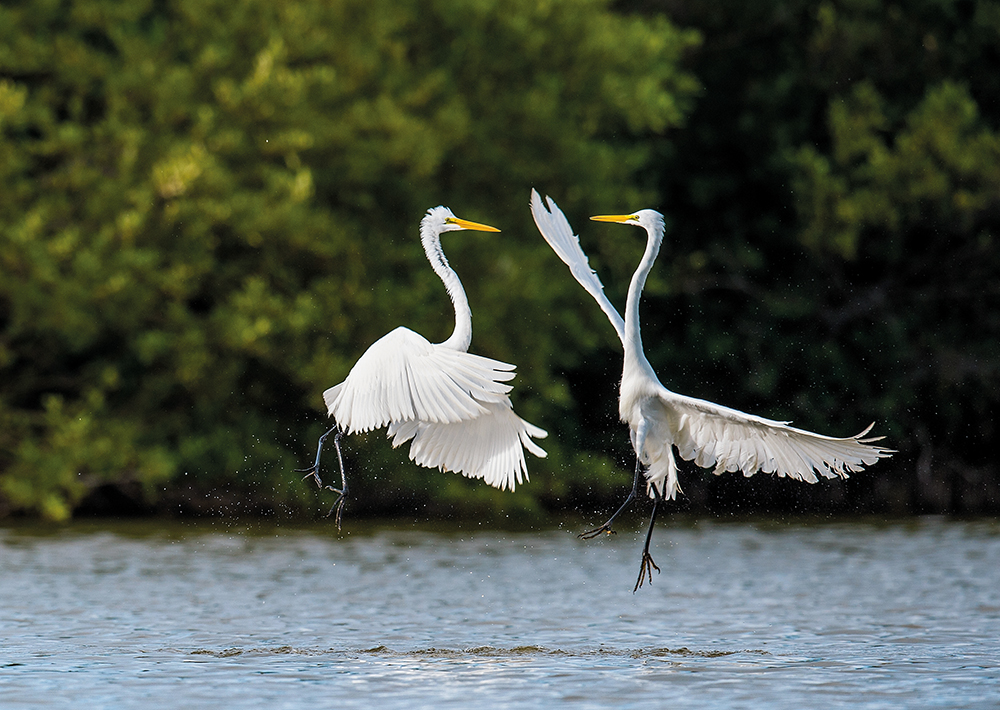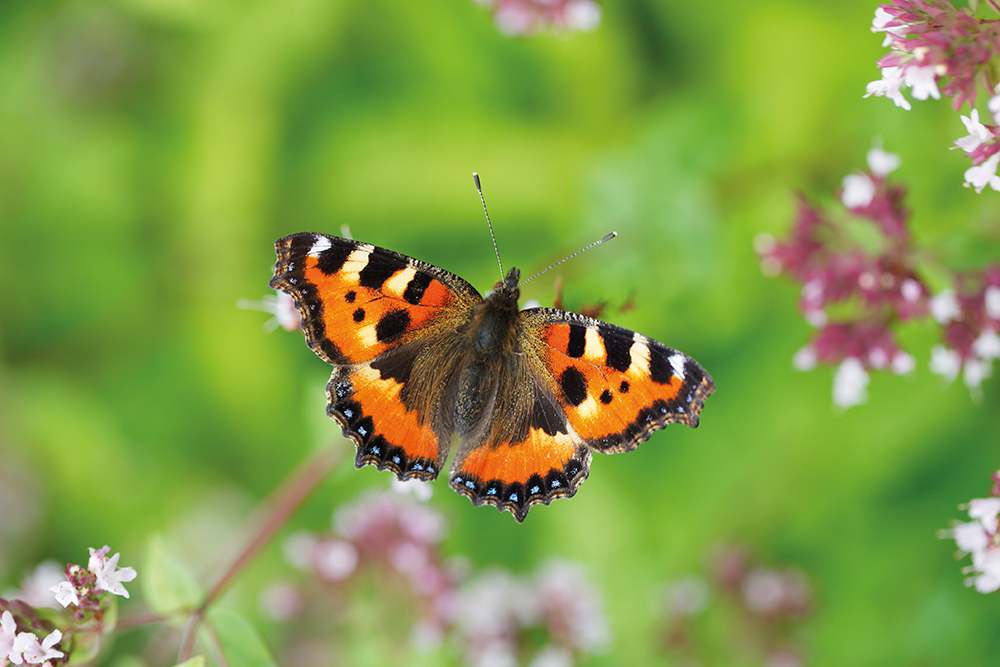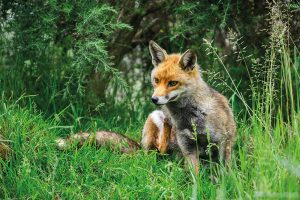Dr Nathalie Pettorelli – Rewilding: Bet on Nature
Opinion article by Dr Nathalie Pettorelli of ZSL (Zoological Society of London)
 Climate & Biodiversity Crises
Climate & Biodiversity Crises
If there is one thing to celebrate about this year, it’s the fact that the country has finally started to wake up to the climate emergency. Thanks, among other things, to the thousands of children regularly striking for their right to have a better future than the one we have been building for them, a majority of the UK public, now back a 2030 zero-carbon target.
But the climate emergency has to be understood and tackled within the context of the current biodiversity crisis, which is equally severe and far-reaching. Climate is indeed the predominant driver of life on Earth, with climate and biodiversity being closely intertwined.
On one hand, biodiversity is being affected by the rapid changes we see in temperatures, precipitation, sea levels and the frequency and severity of extreme natural events, with some species being put at direct risk of extinction with climate change, and others having started to move out of their known distribution range (as we recently showed for the UK).
On the other hand, biodiversity loss, shaped by climate change but also by other factors such as habitat degradation and loss or overexploitation, can accelerate climate change. The loss of coastal ecosystems such as mangroves, sea grass and salt marshes, for example, reduces nature’s ability to help soak up carbon; forest loss and other land use changes account for a significant proportion of greenhouse gas emissions; wildlife loss can influence plant nutrient availability, which itself impacts, for example, how much carbon is released by forests.

Turning the Tide
As the planet’s life-support systems are fast approaching a danger zone for humanity, there is a need to be strategic about the changes we promote for adequately turning the tide on climate change. Geoengineering solutions, sometimes introduced as the magic wand likely to solve our climate change crisis without us needing to alter our ways of living, won’t stop us from losing wildlife at the unprecedented rates we are witnessing.
What we need is a shift in how we conceptualise our relationship with nature, as well as the adoption of a vision that not only promotes a different path for development underpinned by the sustainable use of natural resources, but that also acknowledges that our ability to tackle the current climate crisis is closely linked to our ability to retain and increase biodiversity.
Increasing biological diversity in a rapidly changing world is not easy however, and challenges old ways to think about biodiversity conservation. Until recently, conservation science has been busy researching how we can bring back degraded ecosystems to known ‘healthy’ baselines. However, the intensity and speed of global environmental changes have pressed many practitioners and scientists to realise that some species are being pushed far beyond their traditional ranges and some ecosystems far beyond their limits.
In many places on Earth, it now makes little sense to force the restoration of historical conditions, given the expected changes in environmental conditions in the coming years. In such situations, the facilitation of the emergence of novel ecosystems through rewilding may prove a more sensible and cost‐effective alternative to address declining biodiversity and the delivery of ecosystem services.
‘Well-planned rewilding projects could increase carbon capture and storage capabilities and help protect communities at risk of flooding.’

Rewilding
What rewilding could offer in the context of the current climate emergency is exciting. Well-planned rewilding projects could increase carbon capture and storage capabilities and help protect communities at risk of flooding. However, rewilding also breaks many traditions in conservation, which partly explains why it has proven so controversial.
First, it promotes the idea that the future isn’t about bringing back what we know where we want it, but about supporting the emergence of functioning and biodiverse ecosystems, in whatever forms they may come. It therefore acknowledges that human control on what the wild is, where it goes, and how it should look, has to be significantly reduced if we are to see global biodiversity increase again – a stark contrast to the old Victorian vision that nature needs to be managed, controlled, and dominated.
Second, by placing the emphasis on reduced control and increased unpredictability, it recognises the overwhelming importance of securing successful coexistence between humans and nature for effective conservation-based environmental management. This consequently leads to a change of focus, from ecosystems to socio-ecological systems, thereby leading to a repositioning of the conservation narratives, where humans are firmly part of nature, not separate and not above.
Third, it promotes a more dynamic approach to conservation, where changes and self-reorganisations are welcome, and the norm. Fourth, by being concerned with the level of functioning ecosystems exhibit rather than by their species composition, rewilding opens the door to species being introduced or welcomed in ecosystems outside of their historic distribution range – thereby firmly endorsing assisted colonisation as a conservation tool fit for the environmental management in the 21st century.
Ultimately, rewilding is only one of the nature-based solutions that aim to co-address the current climate and biodiversity crises. But it’s by far the most tantalising one, because it has the potential to drastically impact our relationship with nature.

Admittedly, there are uncertainties and difficulties associated with the practical implementation of rewilding projects, while the evidence available for facilitating sound decision‐making for rewilding initiatives is growing but remains scarce. Moreover, rewilding means different things to different people, having been interpreted by some as a way to promote the conservation of human-free landscapes, leading to conflicts between various fractions of society.
That said, as divisive as the topic may be and as tense as the current debate may appear, whoever is concerned with environmental management can simply not afford to ignore discussions on rewilding and miss potential opportunities to build a better future for the generations to come.
To make rewilding a widely implemented and efficient nature-based solution to address climate change, we need a science-based foundation that is able to inform policy and management: generating this foundation will require dialogue and expertise from all sectors of society. This is why I hope that, if you haven’t yet engaged with these discussions, you’ll soon do.

MEET THE AUTHOR
Dr Nathalie Pettorelli is a Senior Research Fellow at ZSL’s (Zoological Society of London) Institute of Zoology. A climate change and rewilding expert, her scientific achievements include demonstrating how satellite data can be used to support vulnerability assessments of species and ecosystems to climate change, to pioneering social media as a source of data for species on the move due to climate change. Dr Pettorelli has recently edited a book on rewilding, which provides an inclusive and representative overview of where current thinking on this topic sits.
Reference
https://doi.org/10.33548/SCIENTIA449
Creative Commons Licence
(CC BY 4.0)
This work is licensed under a Creative Commons Attribution 4.0 International License. 
What does this mean?
Share: You can copy and redistribute the material in any medium or format
Adapt: You can change, and build upon the material for any purpose, even commercially.
Credit: You must give appropriate credit, provide a link to the license, and indicate if changes were made.
More articles you may like
Dr Lifei Wang | Can Species Distribution Models Inform Us About Future Ecosystems?
The world is buzzing with news about how human activities and climate shifts are reshaping our ecosystems. Have you ever wondered how life will adapt to this rapidly changing world? Ecologists might be able to predict how different species will live in future using computer simulations. Dr Lifei Wang at the University of Toronto Scarborough investigates how different stimulations work under varying conditions to provide new insights into what may lie ahead.
Dr Yong Teng | Improving the Outlook for Head and Neck Cancer Patients
Dr Yong Teng at the Emory University School of Medicine is working with colleagues to overcome the high mortality of individuals diagnosed with cancers affecting the head and neck. One of his approaches is based on understanding the particular mechanisms of the ATAD3A gene, which new insights suggest are closely related to cancers affecting the head and neck.
Dr Tsun-Kong Sham – Dr Jiatang Chen – Dr Zou Finfrock – Dr Zhiqiang Wang | X-Rays Shine Light on Fuel Cell Catalysts
Understanding the electronic behaviour of fuel cell catalysts can be difficult using standard experimental techniques, although this knowledge is critical to their fine-tuning and optimisation. Dr Jiatang Chen at the University of Western Ontario works with colleagues to use the cutting-edge valence-to-core X-ray emission spectroscopy method to determine the precise electronic effects of altering the amounts of platinum and nickel in platinum-nickel catalysts used in fuel cells. Their research demonstrates the potential application of this technique to analysing battery materials, catalysts, and even cancer drug molecules.
Dr Michael Cherney – Professor Daniel Fisher | Unlocking Woolly Mammoth Mysteries: Tusks as Hormone Time Capsules
The impressive tusks found on proboscideans (the order of mammals that includes elephants, woolly mammoths, and mastodons) are like time capsules, preserving detailed records of their bearers’ lives in the form of growth layers and chemical traces. Frozen in time for thousands of years, these layers can unlock secrets about the lives of long-extinct relatives of modern elephants. Dr Michael Cherney and Professor Daniel Fisher from the University of Michigan used innovative techniques to extract and analyse steroid hormones preserved in woolly mammoth tusks. This ground-breaking work opens new avenues for exploring the biology and behaviour of extinct species.




